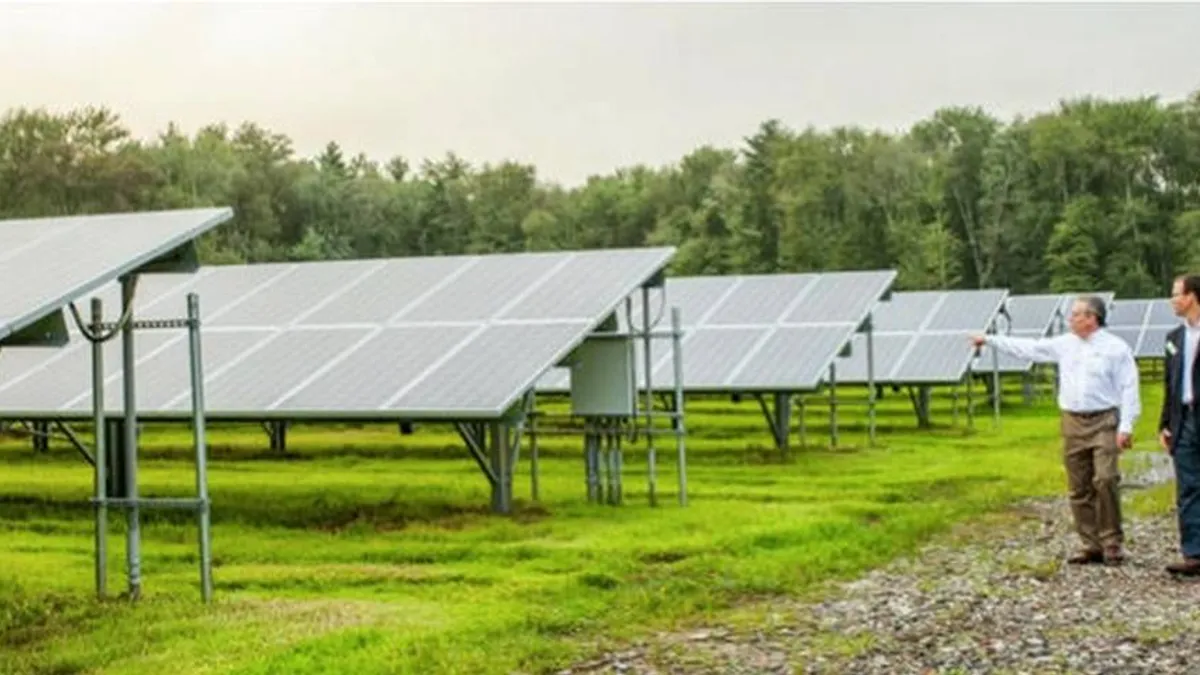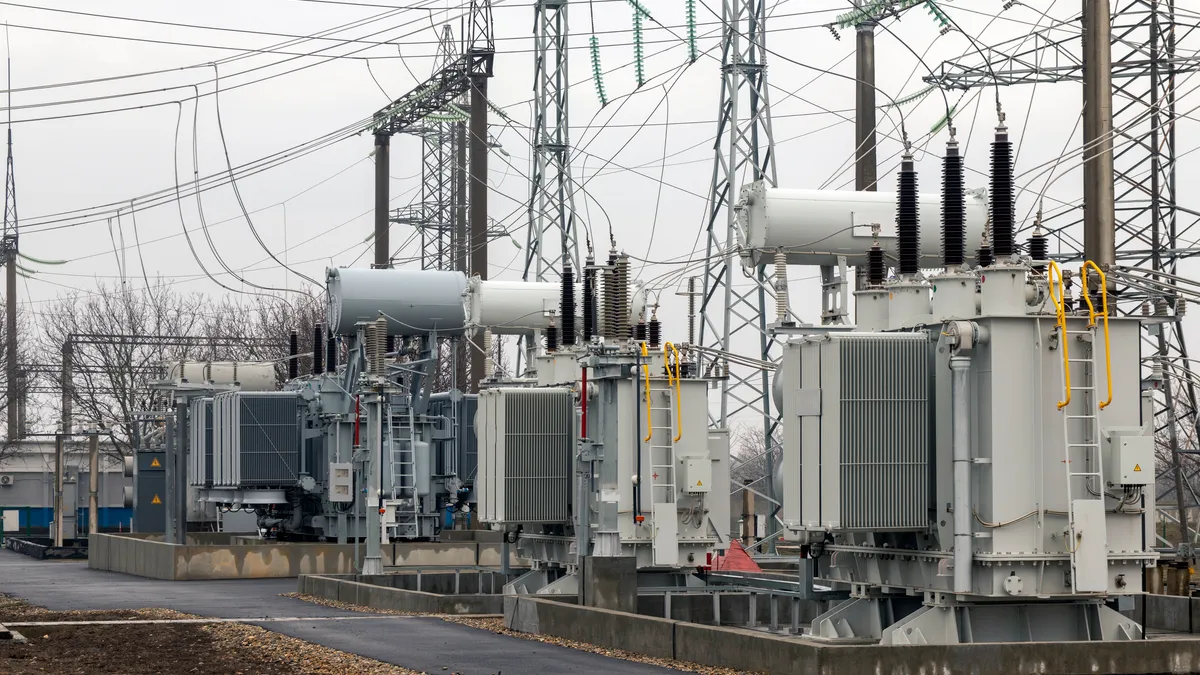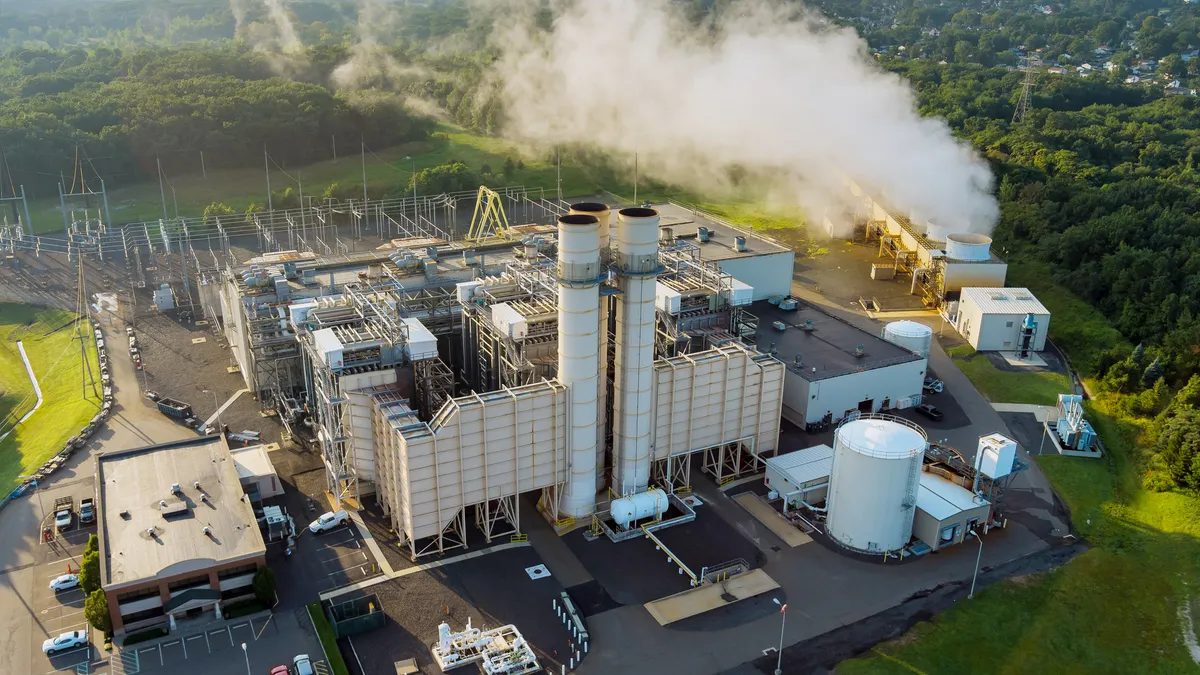With almost two-thirds of utility professionals expecting moderate or significant growth in community shared renewables over the next ten years, it is time to look at what works and what doesn't for utility-led programs.
Investor-owned utilities (IOUs) now have 13 community solar programs representing 91 MW of capacity, according to Dan Chwastyk of the Smart Electric Power Alliance (SEPA). Municipal and public power utilities have 22 programs with a combined 29 MW capacity.
But the most prolific utility-builders of community solar are electric cooperatives. According to SEPA, they have 63 programs with a 43 MW capacity, but the National Rural Electric Cooperative Association says there could be twice that much.
“We have done enough of these that we know what needs to be done and what kind of obstacles come up as the projects are being planned and built,” Tom Hunt, policy director for the Clean Energy Collective (CEC) told Utility Dive.
To find out what works in utility-led community solar programs, Utility Dive talked to the people who helped built them. The key to success, they said, is not any particular program structure or customer incentive, but rather the underlying demand from ratepayers for clean energy. And, of course, it helps if customers can see a return on their investment over the life of a community solar contract.
About community solar
Where state policy is in place, a utility customer can purchase a share in an array built by either a utility or a private developer. The utility credits the customer’s bill for the exported electricity. Where there is no state policy, a utility can offer its own program.
Every utility leader reached by Utility Dive mentioned community solar’s basic appeal in offering a chance to go solar for customers who cannot afford or access rooftop systems.
That element is fundamental to community solar’s market potential, recently estimated by NREL to be between 32% to 49% of the overall distributed PV market in 2020 and represent between $8.2 billion and $16.3 billion in cumulative investment.
CEC’s Hunt said any successful community solar program must first offer “a good value proposition” or, at least, a pathway to one. And the marketing needs to communicate that value proposition to the customer, he said.
Winners, losers, lessons learned
The key to a successful utility-led program is that it must engage and excite customers rather than just fit the utility’s business model, utility leaders said. It is a mistake for the utility to put its concerns ahead of an appeal to customers.
Greystone Power, a Georgia cooperative, has a 1 MW “cooperative solar” facility located near the center of its territory so the 110,000 members can see it, said Residential Energy Consultant Drew Hook. Greystone partnered with Green Power and Radiant Solar on development.
The array is broken into 750 blocks. A member can purchase one or two blocks at $25/month each. The output is deducted from the member’s monthly bill at $0.11/kWh. Greystone's average electricity rate is $0.10/kWh.
With the $25 monthly charge, “it is likely to cost the customer $25 per year more than buying power from the utility without solar ownership,” Hook said. Because the $25 charge is fixed, he added, “it is possible that if rates go up, customers who own solar could benefit.”
Greystone’s array sold out in just over a month and there is a waiting list of more than 250, Hook said. The key was price but the array’s location was also important, he added. “For our membership, being able to see has contributed to the success.”
CPS Energy’s 1.2 MW facility is also fully subscribed and has a waiting list, said Products and Services Manager Rick Luna. Customer-subscribers pay $200 per module for a 25-year contract. They get a $0.14/kWh credit for the output. That makes the payback period for the upfront investment about 9 years, Luna said.
CPS partnered with CEC on development. “We decided we could learn about community solar through CEC’s turnkey operation,” Luna said. “One of the key things other utilities should consider is bringing in a partner with experience because they know how to sell the concept.”
Another key is getting the price right, he said. “But a prominent site could make it more expensive. Our project is in a rural area and is fully subscribed. People don’t need to see it.”
The first Poudre Valley Rural Electric Association (PVREA) project of 116 kW was built in 2012 at its headquarters and is 100% sold out. Its 632-kW project went online in 2015 at a highly visible site nearby and is also 100% subscribed.
The subscriber arrangement was intended “to be similar to a rooftop solar purchase,” Member Relations Manager David White said. There is about a $3/watt upfront lease-to-own investment for the life of the array and the payback period is about 12 years.”
CEC provided turnkey services that included marketing, customer acquisition, and management software. “Partnering with CEC was very useful because they were experts,” White said.
PVREA is now developing a 1,500-kW project. Almost half, 700 kW, will be dedicated to low-to-moderate income subscribers. They are partnering with non-profit Grid Alternatives, an expert in LMI solar, and the Colorado Energy Office.
Those projects represent some of the more successful community solar programs in terms of customer uptake, but not all have seen such interest.
The Rocky Mountain Power (RMP) 20 MW array, located in remote central Utah, is essentially entirely subscribed, according to Renewable Energy Program Manager Keven Hoopiiaina.
The 20 MW size is bigger than most community solar projects because economies of scale offer a better value proposition for subscribers, Hoopiiaina said.
RMP contracted with developer Juwi for construction but handles customer acquisition and billing in-house. A subcontractor helped design the email outreach that accounted for 80% of the 3,200 subscribers, Hoopiiaina said.
Customers subscribe for blocks of 200 kWh. Not all customers can access savings immediately, he said. “It depends on their rates and usage patterns.”
The 20-year community solar rate of $0.117/kWh is above most of RMP’s standard rates but significantly below summer peak rates.
“In a way, it is a premium for solar,” Hoopiiaina acknowledged. “But some savings are possible.”
RMP’s online calculator, connected directly to its billing database, allows prospective customers to enter their account numbers and determine the savings they can expect.
A next project will require new demand, but a growing waiting list suggests demand is there, Hoppiiaina said.
SunSmart, one of the first U.S. community solar arrays, was built in 2008 by the City of St George, Utah, municipal utility, along with Dixie Escalante Electric, a local electric cooperative.
Costs at the time put the subscription price for the first 100 kW at $6,000/kW, said Rene Fleming, manager of energy and water customer services. Federal funding made a 250-kW program possible and the price dropped to $5,000/kW.
Then the recession hit. There are now only 33 kW subscribed.
The joint utility offering provides a 19-year contract. Subscribers get a per kWh credit for the generation from their portion of the array.
“We’ve had a rate increase and the value of that credit went up,” Fleming said. “But the customer is not likely to get beyond break-even at the end of the 19 years.”
The cost of solar has dropped an estimated 60% since the project was built “but our costs are still $5,000 per kW,” Fleming said. “We haven’t had any new subscribers for quite a while. Our customers are turning to rooftop solar to take advantage of the lower costs and the federal tax credit.”
The utilities do not see the project as a loss, Fleming added. “It’s not costing us anything for fuel or transmission, very little for maintenance, and was less expensive per kW than the 80 MW natural gas plant we just built.”
The utilities learned important lessons, she said. One was that economic realities can change customers’ minds. Another was that “a 19-year contract is too long” because “even if there is not a nationwide economic disaster, things change in customers’ lives.”
The City of Springfield, Missouri, municipal utility holds a 25-year power purchase agreement for the output of a 4.95 MW community solar array that went online at the end of 2014, said Cara Shaefer, Director for Energy Services and Renewables. It is Missouri’s biggest solar project.
The project builder-owner is Strata Solar. The utility handled customer acquisition and marketing. The subscription price was linked to a utility-calculated fuel adjustment factor (FAF), which is the differential between the utility’s projected and actual fuel costs. Because it is recalculated every six months, subscriptions that locked in a 20-year, $0.0404/kWh solar FAF rate were only available for a year.
The utility’s standard FAF rate ranges from about -$0.01/kWh to about +$0.015/kWh. If it is low, the solar customer pays $0.05/kWh extra. If it is high, the customer pays only $0.025/kWh extra.
The complicated FAF calculation was largely why only 1.5 MW of the project are subscribed, Schaefer said, although the utility tried to simplify the process with an online calculator.
Utility leaders see the project as “a good first attempt” because they learned important lessons. “It was simply too complicated,” Schaefer said. “If we were to do another community solar project, we would make it a flat rate per kWh and simplify the messaging.”
C&I customers also complained that 20-year contract lacks flexibility, “especially if it costs more than their normal bill,” she added.
The Salt River Project (SRP) 20 MW community solar offering was launched in 2011 for residential customers and schools but is now suspended, said Lori Singleton, director of emerging customer solar programs.
A relatively small group of schools in the utility’s territory that did not have solar suitable roofs subscribed for 5.1 MW at a 10-year fixed price of $0.089/kWh, Singleton said. That rate was significantly below SRP’s average retail rate of $0.10/kWh.
The utility’s residential customers took only 7.1 MW. Five year subscriptions were initially priced at $24.15/kW, which added a premium of between $3/month and $4/month to the average bill, she said. “We modified it to $0.099/kWh when we found out it was difficult for customers to understand.”
The program fell short of expectations but Singleton learned several lessons. “The $24.15/kW was not intuitive and even with the modification it was hard for customers to accept that they would have to pay a premium.”
The five-year agreement was too short, she added. “Customers want a longer term, similar to the commitment they would make if they were installing rooftop solar.”
Finally, “customers want to see the project,” she said. “Ours didn’t have the impact it would have if our customers could see it and develop an emotional connection with it.”
By contrast, SRP’s green premium Earthwise Energy program was launched only six months ago and already has 2,500 customers, Singleton said. “It is easy for customers to understand. The community solar program was complicated.”
Lessons learned
Community solar projects examined by Utility Dive offered a number of lessons, often conflicting one another.
Greystone’s Hook mentioned their array’s visible location as a positive element for subscribers, and Singleton also noted the remoteness of SRP’s project in her analysis of why it was unsuccessful. But remote projects built by RMP and CPS remain oversubscribed, and the visibility of arrays built by St. George and Springfield did not help them.
CPS and PVREA were successful with upfront payments, while St. George was not. SRP’s upfront payment flopped, but things did not improve when it went to a per kWh price. And Springfield also flopped with a per kWh payment.
Both Greystone’s Hook and CPS’s Luna said price was “key” to their programs’ success, but their pricing structures are starkly different. St. George’s Fleming said the utility’s 19-year contract was too long and Singleton said SRP’s 5-year contract was too short.
Amid the conflicting findings, one consistent path to success could be in partnering with private sector providers who know the community solar space. It worked for CPS Energy, Greystone, and PVREA. PVREA is seeking a repeat of that success in its partnership with Grid Alternatives to open an LMI customer base.
St. George, Springfield, and SRP worked independently and flopped. But RMP went it alone as well, and it was one of the most successful programs.
“Utility-led community solar has a lot of potential but it seems that nobody, including CEC, has figured out the right structure,” said CEC’s Hunt. CEC built the first community solar project in 2010 and pioneered the design of everything from tax law to customer acquisition. It remains the sector’s leading developer and many utility programs got early guidance from CEC.
“It might be that any structure that gets customers excited about signing up and keeps them connected to their utility is good," Hunt said.
Xcel Energy is working with Pristine Sun to develop a 2 MW community program in Wisconsin, said Lee Gabler, director for customer solutions. It is also partnering with the Midwest Renewable Energy Association on marketing.
There will be a $1,780/kW upfront payment that is expected to take 15 years to 21 years to pay off, he reported. Of the two megawatts of available capacity, 88% is already subscribed.
In Wisconsin, Xcel is leveraging lessons from the community solar boom in its Minnesota territory, Gabler said.
“The upfront payment can be difficult but it depends on the engagement of the utility and the customers,” he said. "And the growth of remotely located arrays in Minnesota shows that visibility is not needed for success."
More than the structure of payback or rates involved, Gabler noted that the successful community solar projects all share one factor — underlying customer demand for solar from the surrounding community.
“It can be a premium product and it can take a long time for payback but if the demand is there, it doesn’t matter,” he said.






















